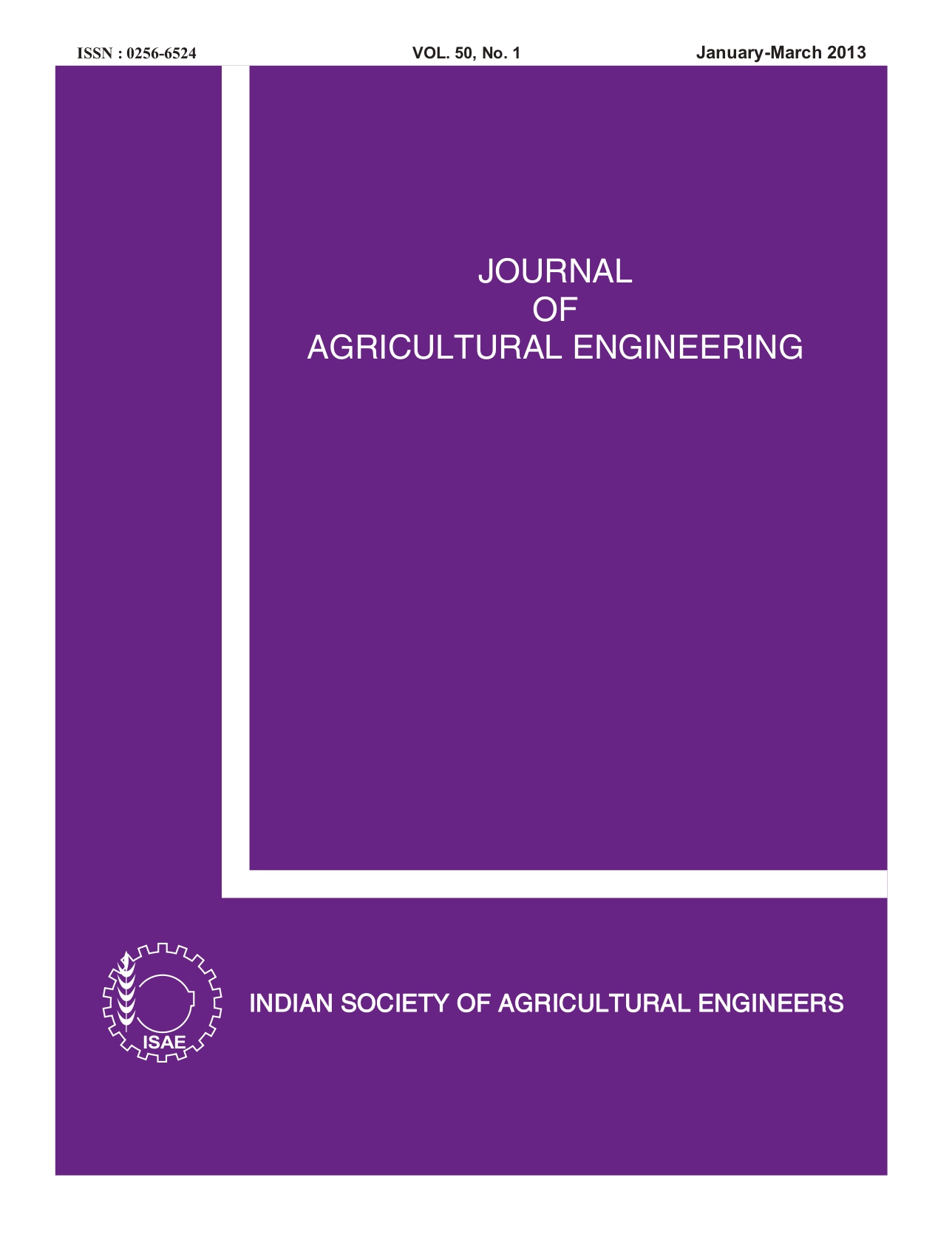Effect of Spraying Pressure and Usage on Discharge Rate and Wear of Hollow Cone Nozzle having different Nozzle Tip Material
DOI:
https://doi.org/10.52151/jae2013501.1497Keywords:
Discharge rate, hollow cone nozzle, orifice diameter, Patternator, spraying pressureAbstract
Spray nozzle and its tips, the most critical component of spray application equipment which influences the efficiency and effectiveness of the chemicals applied are the most neglected component in today’s farming. Hollow cone nozzles having different orifice tip materials (plastic, brass and stainless steel) were evaluated at three nozzle pressures (1.0, 3.0 and 5.0 kg.cm-2) to assess their performance in terms of increase in discharge rate and wear of orifice tip diameter. Percent increase in discharge rate of different hollow cone nozzles at three pressures and time interval of usage showed that that plastic tip material could work within the permissible limit of 15 % increase in discharge rate for about 90, 35, 10 h of use at pressure of 1.0, 3.0 and 5.0 kg.cm-2, respectively. Similarly, brass tip material can work for about 50, 30 and 7.5 h and stainless steel for 90, 50 and 17.5 h, respectively, at these pressures. The increase in average orifice diameter was higher in case of brass tip nozzle as compared to plastic and stainless steel tip nozzles at all pressures.
References
Anon. 1995 a. Indian Standard Crop protection equipment- Hand operated knapsack sprayer, Piston type-Specification (Fourth Revision), IS 3906:1995, Bureau of Indian Standards, New Delhi.
Anon. 1995 b. Indian Standard Crop protection equipment- Foot sprayer-Specification (Fourth Revision), IS 3652:1995, Bureau of Indian Standards, New Delhi.
Anon. 2008. Procedure for measuring sprayer nozzle wear rate. ASABE Standard 471, March, 1991(R2008). Available on: www.asabe.org. viewed in 2008.
Anon. 2009. www.famousminerals.com/chinaclay. Visited on 9th January 2009.
Anon. 2011. Agricultural Research Data Book 2011. Indian Agricultural Statistics Research Institute, New Delhi.
Bindra OS; Singh H. 1977. Pesticide Application Equipment. Oxford and IBH Publishing Co, New Delhi, pp:27-261.
Ibrahim E; Ergin D. 2006.The effect of wear on flow rate increase of cone nozzle made of different materials. J Agric. Sci., 9 (1), 73-78.
Krishnan P; Evans T; Ballal K; Kemble LJ. 2004. Scanning electron microscopic studies of new and used fan nozzles for agricultural sprayers. Applied Eng. Agric., 20(2), 133-137.
Oerke E. 2006. Crop losses to pests. J Agric Sci., 144 (1), 31-43.
Ozkan HE; Reichard DL; Ackerman KD. 1992. Effect of orifice wear on spray pattern from fan nozzles. Trans. ASAE, 35(4), 1091-1096.
Riechard DL; Ozkan HE; Fox R D. 1991. Trans. ASAE, 34(6), 2309-2316.
Reichard DL; Ozkan HE; Sweeney JS. 1992. Droplet size distribution across the fan patterns of new and worn nozzles. Trans. ASAE, 35(4), 1097-1102.
Womac AR. 2000. Quality control of standardized reference spray nozzles. Trans. ASAE, 43(1), 47-56.
Zhu H; Reichard HE; Ozkan HE; Brazee RD; Fox RD. 1995. Mathematical model to predict wear rate of nozzles with elliptical orifices. Trans. ASAE, 38(5), 1297-1303.














